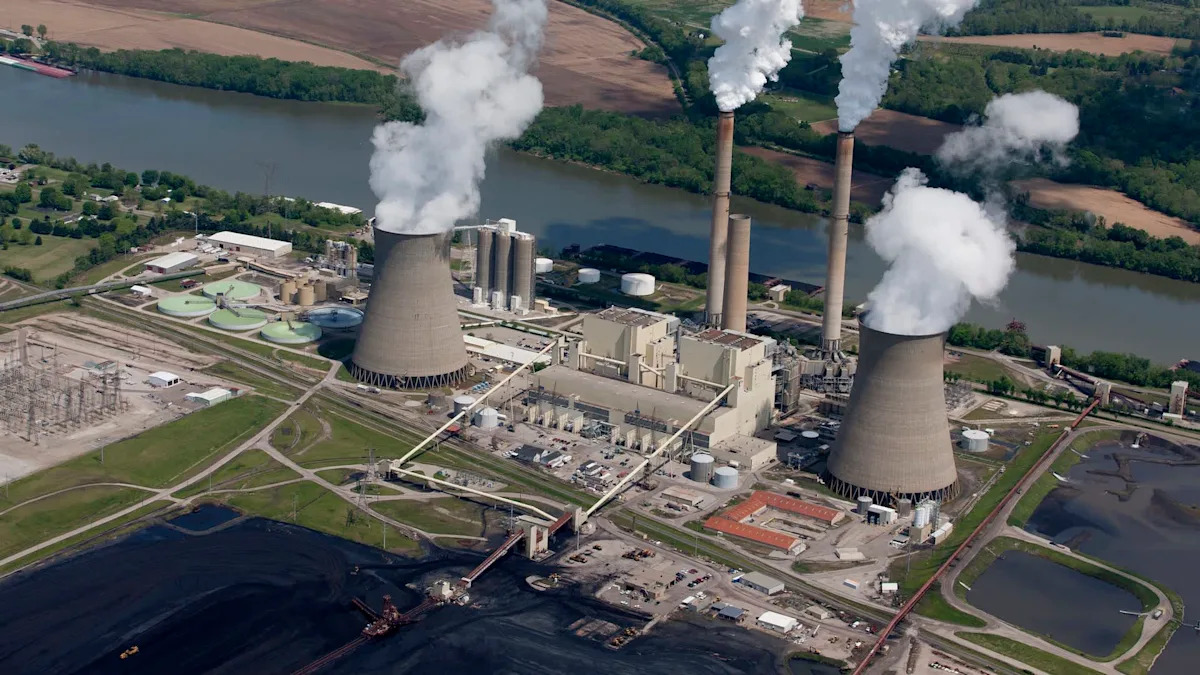Decades of radiation exposure for residents in Piketon, Ohio, appear to have brought devastating impacts to the town, home to the Portsmouth Gaseous Diffusion Plant.
Opened in the 1950s, the Piketon facility was responsible for enriching uranium, first for weaponry during the Cold War and later for commercial purposes, until it closed enrichment operations in 2001. Tragically for workers and those living nearby, exposure to uranium hexafluoride and other hazardous chemicals seems to have brought a range of health problems to the area.
According to The Guardian, Pike County’s cancer mortality rate from 2018 to 2022 was over 40 percent higher than the national rate, and its life expectancy was almost a decade less than the national average.
“So many people are suffering with illnesses, not just cancer,” Vina Colley, former facility worker and current president of Portsmouth/Piketon Residents for Environmental Safety and Security, told the outlet.
Residents like Colley have also reported cardiac and neurological issues. But even as these concerns persist — and as the Department of Energy and other federal groups say, per The Guardian, that in their studies, “the levels of contamination they have recorded are within regulatory levels” — the community could be facing new challenges.
The Guardian noted that changes at the Health and Human Services Department under the Trump administration have suspended “review boards that oversee medical aid distribution to more than 700,000 cold war-era government employees who worked at 380 civilian and military nuclear programs around the country.”
Meanwhile, portions of the Piketon facility are going through open-air decontamination and decommissioning, with some concerned that the process could unleash even more health hazards into the environment.
“Alternatives [to open-air decontamination] are more expensive, but our community shouldn’t be put at an increased risk because it costs a little more to minimize that risk,” county health commissioner Matt Brewster told The Guardian.
But as parts of the Piketon facility are being decommissioned, others may be coming back into use. The Trump administration has moved in 2025 to “usher in a nuclear renaissance,” in the words of the DOE, which is helping to oversee President Donald Trump’s executive orders to invest in expanded nuclear energy capacity.
In April, some Ohio leaders called on the DOE to invest funds allocated for uranium enrichment into the Maryland-based company Centrus Energy, now operating in Piketon and previously commissioned by the federal government. As of September, Centrus is planning to enhance its enrichment capacity at the former Portsmouth plant, saying it will bring 300 new jobs to the area, according to the Columbus Dispatch.
Job creation is not an unimportant matter, particularly in “a county with the second-highest poverty level in the state,” as noted by The Guardian, which also reported that hundreds have been hired onto the decontamination and clean-up efforts.
And certainly, the economy is central to nuclear scale-up itself, with the Trump administration and industry leaders saying that expanded nuclear capacity is needed to compete with foreign energy providers and meet U.S. energy demands, including those fueled by energy-hungry artificial intelligence operations.
Nuclear energy production may indeed have some benefits, providing large amounts of energy while releasing little to no planet-heating pollution in the process. But it can come with numerous costs too — not only in chronic illness, impacts to quality of life, lost wages, and medical care costs that those exposed to radioactive waste need access to, but also long-term contamination risks that must be responsibly addressed to safeguard future generations and to build authentic public trust in nuclear energy as a more sustainable but also safe source within the energy mix.
Considering the impact of its radioactive waste, in addition to the expenses and complexities that make it difficult to commercialize, it’s a good thing that the transition away from dirty energy doesn’t rest solely on the promise of nuclear power. Individuals, neighborhoods, cities, and states are already making a big difference in the shift away from fossil fuels by investing in clean energy options that don’t involve nuclear power, like solar and wind.
In the long term, it’s possible that researchers will arrive at innovative solutions to the problems that nuclear power can pose and make it a more meaningful part of the energy mix. In the meantime, it will be essential for communities impacted by its production to be assured of access to medical care, effective clean-up, and contamination prevention measures.
Join our free newsletter for good news and useful tips, and don’t miss this cool list of easy ways to help yourself while helping the planet.
